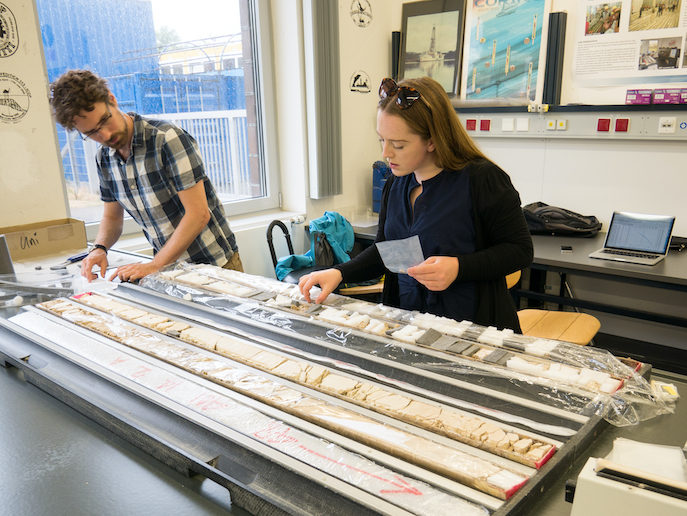Sampling ancient seafloors to comprehend climate change and recovery
In a year of raging wildfires and increasingly extreme weather globally, all fuelled by climate change, scientists are scrambling to refine their climate models. One solution is to compare different warming events from eons ago, to understand how the Earth responded to different carbon emissions scenarios. “Studying past climate change is like a fascinating puzzle. Everything that happens in the Earth system – the atmosphere, hydrosphere, biosphere and lithosphere – is related,” explains Matthew Clarkson, coordinator of the EU’s EnvironMetal project, hosted by the ETH Zurich – Swiss Federal Institute of Technology. “So, understanding the connections requires detailed study and the quantification of seemingly independent processes.”
Oceanic anoxia
Climate change leads to many damaging responses. This project focused on understanding the loss of oxygen from the oceans, also known as the development of oceanic anoxia. “In the past we see that anoxia directly drives the extinction of seafloor organisms,” adds Clarkson, who has a doctorate in geochemistry and geology, from the University of Edinburgh. “But over hundreds of thousands of years, anoxia increases the preservation of carbon in the sediments, removing it from the atmosphere and helping the climate to return to cooler conditions.” EnvironMetal, which was supported by the Marie Skłodowska-Curie Actions programme, used new chemical tools developed over the last decade, to trace global-scale environmental change. Thanks to these tools, past climate change can be viewed from multiple angles with a new perspective.
Gathering new metal isotope data sets
Key to the project was the measurement of trace metal isotopes, particularly uranium, in samples of seafloor sediments previously collected under the International Ocean Discovery Program from the Pacific, North Atlantic and Southern Oceans. “The most exciting result was from one Pacific site; our uranium proxy let us estimate the global extent of oceanic anoxia during a major global warming event that occurred around 55 million years ago, the Palaeocene Eocene Thermal Maximum,” notes Clarkson. This is an important parameter as it can be used as a key element in climate models simulating past change events to shine a light on future scenarios. Clarkson acknowledges that studies of past climate change often indicate a bleak outlook for what we might expect in the future, such as the expansion of oceanic anoxia. But he says the way forward is to proactively prevent the problem from getting any worse by taking immediate action. The team made over 400 isotope measurements on modern and ancient seafloor samples, and the work is ongoing, although the funding period has ended. The focus now is on publishing the results and combining them with other data sets. Clarkson concludes: “We can use the new metal isotope data sets to fill in pieces of the global puzzle. The next steps are to understand the connections between all these different data sets and make comparisons between different case studies of past global warming.”
Keywords
EnvironMetal, climate change, Earth system, global warming, metal isotope data sets, oceanic anoxia, proxy, samples, uranium







